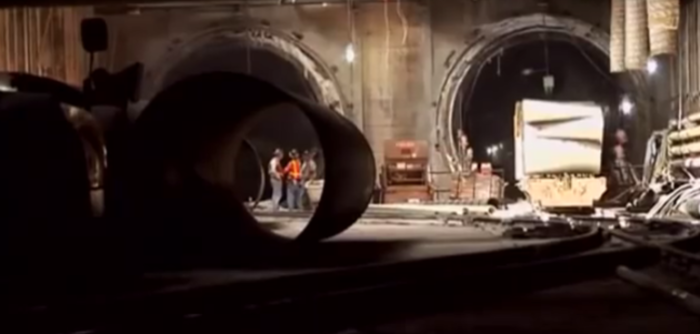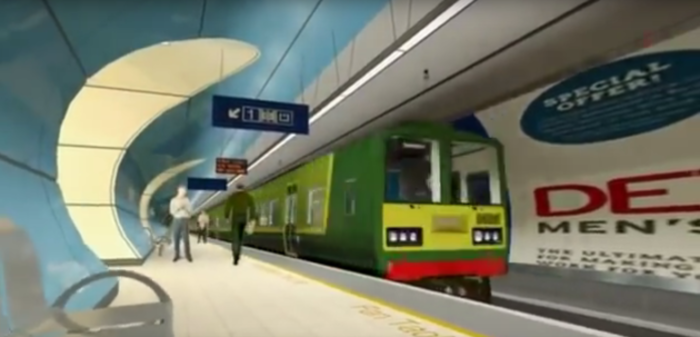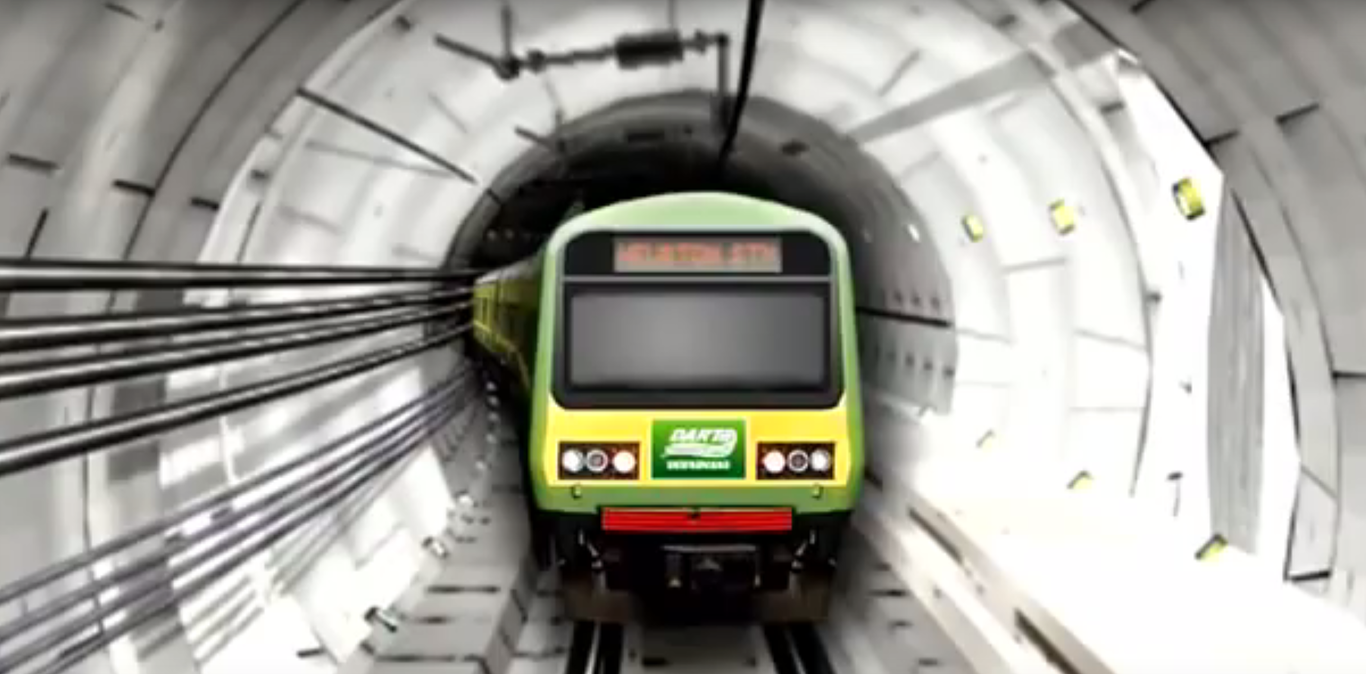Whatever happened to... An underground rail line through Dublin's city centre?
The Dart Underground has been talked about for more than 40 years.
OVER THE PAST several months, Fora has taken a look at some of the more notable big-ticket projects that were planned during the Celtic Tiger period – or in the aftermath of its demise.
Most recently, we detailed the story behind the intended construction of a massive shopping complex in the heart of Limerick.
A large chunk of the city centre has lain idle for years after the recession grounded plans to build a retail mecca.
However, since then the site has been taken over by the council which recently unveiled plans to develop the area.
In this installment, we’re going back to Dublin. We previously looked at the many delays to the proposed Metro North, so it seems only right that we take a look at what is meant to be its sister project: the Dart Underground.
What is it?
The Dart Underground is a proposed railway line that would run under the heart of Dublin city centre and would link all rail, Dart and Luas services in the capital.
The 7.6km line would connect the northern track to Heuston Station and from there to the Kildare rail lines.
It has been envisaged that the line will go under Spencer Dock and through the city with stops at Pearse Station, St Stephen’s Green, Christchurch and Heuston, as well as a ground-level station at Inchicore.
 The proposed Dart Underground route
The proposed Dart Underground route
The intent was that this would free up trains to go through Connolly Station and would link Dublin’s main rail lines.
The projected cost of the Dart expansion project was €4 billion, €3 billion of which was dedicated to the underground project. It was expected to take about six years to build.
It was hoped that the Dart Underground would have extended the passenger capacity of Dublin’s commuter rail services to 100 million journeys yearly, from 33 million in 2010.
When was it first suggested?
The idea to build some form of underground rail line to connect the main stations in Dublin city centre has been seriously considered since the 70s.
The Dublin Rapid Rail Transportation Study, published by the CIÉ Group in 1975, recommended building a tunnel to link Connolly and Heuston stations.
What happened?
With the onset of the 80s recession, the 1975 report wasn’t acted on. However, in 2001 a transport strategy was published for the greater Dublin area which again recommended linking Connolly and Heuston.
After this, Irish Rail started seriously looking at the project. It first carried out a feasibility study between July 2002 to June 2003.
 The project would see underground stations built
The project would see underground stations built
Then, from November 2006 to May 2008, it worked on a preliminary design for the project to develop the tunnel, railway system and stations.
In 2011, An Bord Pleanála granted permission for the Dart Underground, however by this stage Ireland was mired in the depths of the recession, and the project was put on hold.
What’s the latest?
When the economy started to pick back up, it looked like the Dart Underground could again be on track.
In May 2015, Irish Rail started issuing letters to 5,000 home and business owners about acquiring the land needed for the project under compulsory purchase orders.
However, the next year the project was put on ice again. Then transport minister Paschal Donohoe said that the project would not proceed “as currently designed”.
 A computer render of the Dart Underground
A computer render of the Dart Underground
The state started looking for a “lower-cost technical solution” for the initiative.
Last year Transport Minister Shane Ross said that plans for the Dart Underground are still “alive” and added that it is “being designed and will certainly be eligible for EU funds”.
Plans for the Dart Underground were also included in the recently published National Transport Authority plan for the greater Dublin area for 2016-2035.
In October last year, the Irish Independent reported that transport officials were considering scaling down the project through various means, such as by having part of the line run overground instead.
Irish Rail has provisionally mentioned starting some form of construction work by 2020, however, as with the Metro North, the Dart Underground has been talked about for years with very little progress to show for it.
Don’t be completely surprised to see a re-hash of this article in 2027.






